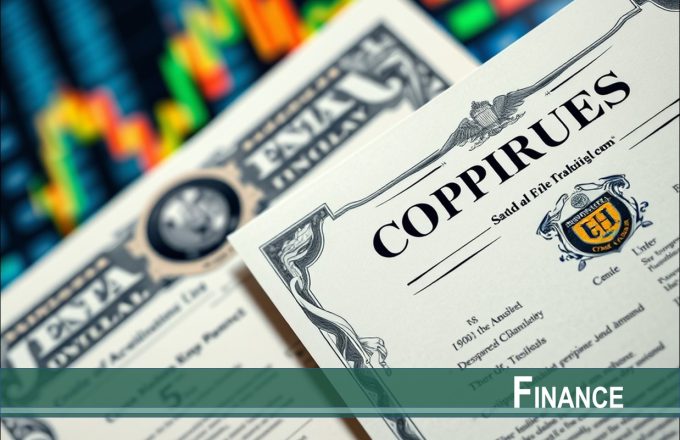Firms must often decide whether to disclose private information regarding their costs to other market participants. Although extant literature has explored firms’ incentives to disclose exogenous and uncertain costs, little is known about when their endogenous costs should be disclosed. This paper studies the cost-disclosure strategies of competing firms whose inputs are sourced from and endogenously priced by upstream suppliers. We find, first, that cost disclosure affects not only market competition but also the motivations of suppliers in setting their input prices. As such, firms can strategize their disclosure decisions to optimize their procurement costs. Second, we find that firms’ disclosure decisions vary depending on both the nature of the competition and the market structure at hand. That is, when competing firms source from the same supplier or compete on price, they never disclose their costs; in such a case, nondisclosure is strictly better for consumers and welfare compared with disclosure. When competing firms source from different suppliers and compete on quantity, they always disclose; in such a case, disclosure is strictly better for consumers and welfare compared with nondisclosure. We also find that whereas manufacturers’ disclosure incentives are misaligned with those of suppliers, they are largely aligned with the goal of maximizing channel profits. Together, our results underscore the distinct role that endogenous costs play in firms’ disclosure decisions.
March-April 2025
Marketing Science
To balance the need for privacy and the benefits of big-data analytics, regulators around the world are giving consumers control over their data, allowing them to choose whether or not to voluntarily share their purchase history data with firms. Intuition suggests that voluntary data sharing only benefits consumers who can now choose to share their data only when it is profitable to do so. To investigate this argument, we build a model in which a monopolistic firm sells a repeatedly purchased product to consumers over two periods, and consumers decide whether or not to share their purchase history data with the firm, who can use it in the future to price discriminate against them. We find that, compared to when data collection is completely outlawed, voluntary data sharing can benefit the firm but at its consumers’ expense. Moreover, regulations that mandate firms to better protect consumer data against data breaches can backfire on consumers. Finally, we show that under voluntary data sharing, a firm’s ability to offer consumers a monetary incentive to share their data can improve profits without hurting consumers. Taken together, these findings underscore the surprising effects of voluntary data sharing and caution public policymakers of how certain data policies that, on the surface, seem purely beneficial can lead to unintended consequences.
March 2025
MIS Quarterly
We study voluntary cost disclosure by duopoly firms when they can invest in a cost-reduction technology, i.e., when their private cost is endogenously determined. We find that, contrary to most of the literature, firms disclose their endogenous cost information regardless of the type of competition. The underlying mechanisms and welfare implications, however, are different. Under Bertrand competition, cost disclosure helps a firm avoid aggressive investment in cost reduction to coordinate actions to the mutual advantage of the duopoly firms. Under Cournot competition, disclosing cost information enables a firm to show a hardened stance toward the competing firm. Although firms gain from their disclosure decisions under Bertrand competition, their disclosure decisions under Cournot competition place them in a prisoner’s dilemma, as both firms would be better off if they chose not to disclose their information. Consequently, consumers may lose under Bertrand competition but gain under Cournot competition.
March 2025
The Accounting Review
This study examines the properties of innovation disclosures contained in new product announcements, a form of voluntary, nonfinancial disclosure. We analyze these properties using a novel, text-based measure of the extent of product innovation disclosed in new product announcements. We find that stock prices react more positively to announcements with more extensive innovation disclosure. In our main analyses, we first find that a higher level of innovation disclosure predicts a greater increase in future sales. We further find that this predictive ability falls when managers have stronger incentives to maximize their wealth and when the corporate governance structure and customers’ bargaining power weaken. Our research enhances the understanding of the properties of managerial voluntary, nonfinancial disclosures and contributes a text-based measure of innovation that captures managerial assessment of the extent of product innovation. This new measure is more generalizable and incrementally informative for firm value and future performance than conventional innovation measures that depend on the existence of patents or research and development expenses.
March 2025
Review of Accounting Studies
Information production associated with derivatives markets is not a sideshow; rather, it has significantly positive spillover effects on an array of corporate decisions of underlying firms. Using a regression-discontinuity design based on exogenous variation in options availability as an instrument for changes in the information environment, we show that options introductions have causal effects on corporate policies on both sides of the balance sheet. Through improved information efficiency, options availability reduces the need for debt and payout, increases efficient investment, and yields superior innovation. We conduct two independent experiments demonstrating that our instrument’s impact is not derived from alternative channels.
February 2025
Journal of Financial and Quantitative Analysis
Mutual funds investing in illiquid corporate bonds actively manage Treasury positions to buffer redemption shocks. This liquidity management practice can transmit non-fundamental fund flow shocks onto Treasuries, generating excess return volatility. Consistent with this hypothesis, we find that Treasury excess return volatility is positively associated with bond fund ownership, and this pattern is more pronounced among funds conducting intensive liquidity management. Causal evidence is provided by exploiting the U.S. Securities and Exchange Commission’s 2017 Liquidity Risk Management Rule. Evidence also suggests that the COVID-19 Treasury market turmoil was attributed to intensified liquidity management, an unintended consequence of the 2017 Liquidity Risk Management Rule.
February 2025
The Review of Financial Studies
The Interactions of Customer Reviews and Price and Their Dual Roles in Conveying Quality Information
Customer reviews help communicate product information, but their effectiveness may suffer from selection bias (i.e., depending on factors, such as the individual experience and price, not all consumers may voluntarily write reviews). Consequently, a seller may have to resort to additional means (e.g., signaling through price in the context of an experience good) to convey its quality. This paper develops an analytical model to investigate the interaction of customer reviews and price with the presence of selection bias in marketing an experience good with uncertain quality to consumers. Our analysis reveals the dual roles played by both customer reviews and price in communicating quality information. On one hand, customer reviews may either directly convey product information with unbiased distribution of reviews or facilitate price signaling when reviews are biased because of selection. On the other hand, price may be adjusted to mitigate the selection bias of reviews to make them more informative, and it may also signal quality directly in the presence of review bias. As a result, we show that bias in reviews may actually benefit consumers without compromising information communication as the incentive to reduce review selection bias makes it credible and profitable for the high-quality seller to signal its type by undercutting the price that would be set if it is of low quality. We then extend our analysis to examine the information, profits, and welfare impacts of several important design elements of a review system as well as the impact of consumers’ aversion to risk. Finally, the implications of our findings on the management of user-generated content and pricing are discussed.
January-February 2025
Marketing Science
We study information sharing between strategic investors who are informed about asset fundamentals. We demonstrate that a coarsely informed investor optimally chooses to share information if his counterparty investor is well informed. By doing so, the coarsely informed investor invites the other investor to trade against his information, thereby reducing his price impact. Paradoxically, the well informed investor loses from receiving information because of the resulting worsened market liquidity and the more aggressive trading by the coarsely informed investor. Our analysis sheds light on phenomena such as private communications among investors and public information sharing on social media.
January 2025
Journal of Financial Economics
Short selling regulation has been a longstanding topic of debate in financial markets, particularly during times of crisis. While proponents argue that short selling aids in price discovery and market efficiency, critics raise concerns about manipulative short selling practices that can destabilize markets. This paper presents a theoretical model to analyze the impact of short selling, specifically manipulative short selling (MSS), on bank runs and efficiency. The model demonstrates that MSS can emerge as an equilibrium outcome driven by uninformed speculators seeking to profit from artificially depressing stock prices. The prevalence of MSS is influenced by the level of informed trading and coordination friction among creditors. We find that short selling bans can enhance welfare by mitigating the negative effects of MSS, particularly in scenarios with high coordination frictions. We also provide policy and empirical implications.
January 2025
Journal of Economic Theory






















